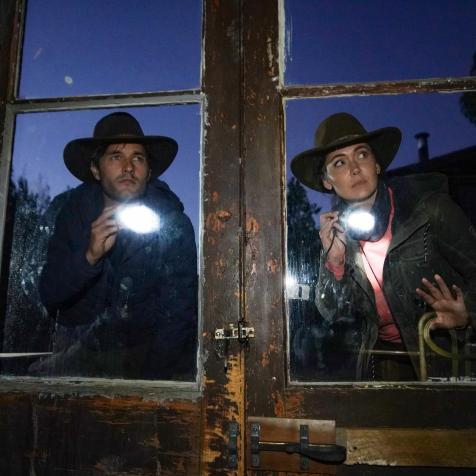
Emiliano Ruprah
Celebrating Día de los Muertos in 2020
I have come to Oaxaca to take part in the Día de los Muertos celebration. This region is clearly in the grip of the pandemic, preparations are well underway to welcome the spirits of the dead on the 31st of October and the 1st and 2nd of November.
Día de los Muertos will take on added significance this year as the country mourns almost 90,000 deaths due to the pandemic. From the border cities of the north, like Tijuana, to the southernmost towns of Chiapas, Mexicans will build altars in their homes and cover graveyards in flowers as they pay their respects to the dead. This remains one of the oldest surviving pre-Columbian festivities in Mexico.
Honoring the Departed for Día de los Muertos 20 Photos
Día de los Muertos is a multi-day rememberence celebration in the Mexican tradition. As family and friends prepare for this sacred holiday, explorer and storyteller Emiliano Ruprah captured the colors of this beautiful tradition on the streets of Mexico.Continue to follow the celebrations on @emilianoruprah on Instagram.
Though Día de los Muertos ultimately deals with the spirit world, there is no shortage of earthly pleasures that announce its arrival. As I walk through the Mercado 20 de Noviembre, I am enveloped in the transcendental smoke of copal resin, abruptly roused by freshly cut cempasuchil flowers, and compelled to gluttony by the wafting aromas of freshly baked pan de muerto (bread of the dead) being served with steaming cups of freshly made hot chocolate. It is only through these objects, perhaps, and their symbolism, that outsiders can begin to understand the deeper meanings involved in these traditions and the complex relationship Mexican’s have with death.
One of the most iconic representative objects of Día de los Muertos is the Cempasuchil flower. They are everywhere: covering window sills and filling vases, adorning sculptures of skeletons or worn on hats and crowns. Some say that their orange pedals keep the warmth of the sun and illuminate the return of the dead. Others say the fragrance of the cempasuchil leads the spirits home. You will not find a home without at least a dozen of these flowers and many of the more traditional abodes will scatter their pedals outside to lead their loved ones in.

Emiliano Ruprah
Another essential object is Pan de los Muertos, or the bread that is made for the occasion. Its circular form represents the cycle of life and death each human passes through, the sugary pellet at its center symbolizes the human skull and the geometric patterns around are references to bones and tears. For some, the flavor of Azahar, derived from a citrus flower, represents the memory of the deceased. There are many traditions and objects associated with Dia de los Muertos but it would be too reductionist to paint every symbol’s meaning with a broad brush.
In 2008, UNESCO recognized the importance of Día de los Muertos by adding the holiday to its list of Intangible Cultural Heritage of Humanity. Today Mexicans from all religious and ethnic backgrounds celebrate it, but at its core, the holiday is an expression of indigenous culture. In fact, it is a miracle that Dia de los Muertos has survived this long. Many indigenous traditions were lost during the conquest or outlawed by the Catholic Church in Mexico and many others have been forgotten by whole communities who have urbanized or have been transformed irreversibly by tourism. Over 40 indigenous groups represented by some six million people keep variations of this ancient tradition alive.

Emiliano Ruprah
More recently, Day of the Dead was included in the opening sequence of a Bond film and was the subject of the popular animation “Coco”. Due to their similar themes and calendrical dates, Halloween and Día de los Muertos have begun to cross pollinate in both countries.
As I walk through the streets of Oaxaca city, I wonder what will become of the indigenous traditions that make up this festival. I meet Anayeli, a woman with a Tejate stand, which is a non-alcoholic maize and cacao beverage with pre-hispanic origins. She tells me it’s going to be an unusual year for city folk. The graveyards will limit who can visit their loved ones and the pandemic, in general, has wreaked havoc on the community. She later tells me her own community, a small Zapotec village an hour or so out of the city, will be shimmering with candles a few nights from now. It is villages like hers, those forgotten corners of Mexico, that will keep the ancient origins of this tradition alive in the coming years.
Though mass concentrations of people are being regulated in Oaxaca City, its citizens are far from a quiet retreat. You would think that the streets of Oaxaca would be devoid of their usual flair in the midst of a global plague. Instead, they defy expectation and celebrate the day of the dead (and death) in walls, window sills and door frames across the city: through caricature, mockery, admiration, horror, and awe-inspiring altars. This characteristic, after all, to behold death in all of its multi-dimensionality, is what defines being Mexican above all else. If there were one gift worth bestowing upon the world during these times, this would be it.
Continue to follow the Día de los Muertos celebrations on Instagram @emilianoruprah.



















